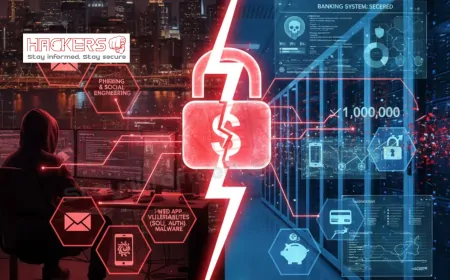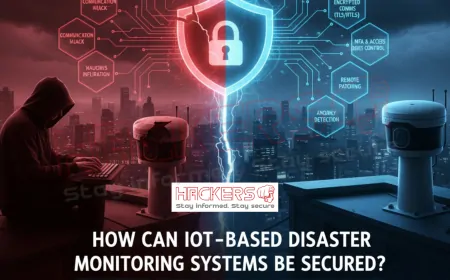What Are Zero-Day Exploits and How Do Hackers Find Them First?
You’re sitting at your desk, sipping coffee, when your phone buzzes with a news alert: "Critical flaw discovered in Windows. Update now." You click update, breathe a sigh of relief, and go back to work. But what if that flaw was already being used by hackers *before* the alert? What if they had been inside your system for weeks, stealing data, watching your screen, and you had no idea? That’s a **zero-day exploit**. It’s the scariest kind of cyberattack because no one, not even the software maker, knows it exists until it’s too late. In 2025, zero-days are the nuclear weapons of the hacking world. They’re rare, expensive, and devastating. This blog explains what zero-day exploits are, how hackers discover them before anyone else, and what you can do to stay safe, even if you’re not a tech expert.
Table of Contents
- Introduction
- What Is a Zero-Day Exploit?
- The Zero-Day Lifecycle: From Discovery to Patch
- How Do Hackers Find Zero-Days First?
- Famous Zero-Day Exploits That Shocked the World
- Who Buys and Sells Zero-Days?
- How to Defend Against Zero-Day Attacks
- Conclusion
- Frequently Asked Questions
What Is a Zero-Day Exploit?
A **zero-day** refers to a security flaw in software that the vendor doesn’t know about and has had **zero days** to fix. When hackers find it first and create a working attack, it becomes a **zero-day exploit**.
Break it down:
- Zero-Day Vulnerability: The hidden bug in code
- Zero-Day Exploit: The weapon built to use that bug
- Zero-Day Attack: The actual breach using the exploit
Think of it like a secret back door in a bank vault. The bank doesn’t know it’s there. The robbers do. They walk in, take the money, and leave before anyone notices.
The Zero-Day Lifecycle: From Discovery to Patch
Every zero-day follows a predictable path:
- Day 0: Flaw exists in code. No one knows.
- Discovery: Hacker or researcher finds it.
- Weaponization: Exploit code is written and tested.
- Exploitation: Used in real attacks (silent or loud).
- Disclosure: Reported to vendor (responsible) or leaked/sold (irresponsible).
- Patch Day: Vendor releases fix. Now it’s a "one-day" or "n-day" exploit.
The dangerous window is between **Discovery** and **Patch**. It can last days, months, or even years.
How Do Hackers Find Zero-Days First?
Finding a zero-day is like finding a needle in a haystack made of millions of lines of code. Here’s how the pros do it:
- Fuzzing: Feeding random or malformed data into software to make it crash. Crashes reveal memory leaks or logic errors.
- Reverse Engineering: Taking apart compiled software (like Windows or iOS) to read the machine code and spot flaws.
- Code Auditing: Reading open-source code line by line (e.g., Linux, Apache) looking for mistakes.
- Patch Diffing: Comparing old and new versions of software. If a patch fixes a buffer overflow, the old version had a zero-day.
- Memory Corruption: Exploiting how software handles memory. Common in C/C++ programs like browsers and OS kernels.
- Sandbox Escape: Breaking out of restricted environments (like Chrome tabs) to reach the full system.
- Supply Chain Analysis: Finding flaws in third-party libraries used by thousands of apps.
Tools used: IDA Pro, Ghidra, AFL fuzzer, Burp Suite, and custom scripts. It takes skill, patience, and sometimes luck.
Famous Zero-Day Exploits That Shocked the World
History is full of zero-days that changed everything:
| Year | Exploit Name | Target | Impact |
|---|---|---|---|
| 2014 | Heartbleed | OpenSSL | 2/3 of web servers leaked private keys |
| 2017 | EternalBlue | Windows SMB | Powered WannaCry: $4B+ damage |
| 2020 | SolarWinds | Orion Software | 18,000+ orgs spied on, including US gov |
| 2021 | Log4Shell | Log4j Library | Billions of devices vulnerable |
| 2024 | Ivanti VPN Zero-Days | Ivanti Connect Secure | Chinese hackers in 1,700+ networks |
These weren’t found by script kiddies. They were crafted by nation-states, elite hackers, and defense contractors.
Who Buys and Sells Zero-Days?
Zero-days are big business. Here’s the market:
- Governments: US, China, Russia, Israel pay $1M+ per exploit for spying or defense
- Defense Contractors: Raytheon, Lockheed Martin buy for military use
- Bug Bounty Programs: Google, Apple, Microsoft pay $100K to $2M to *prevent* weaponization
- Gray Market Brokers: Zerodium, Crowdfense resell to highest bidder
- Cybercrime Gangs: Buy iPhone zero-days for $10M to install spyware
A single iOS zero-day chain (multiple flaws linked) sold for **$20 million** in 2023.
How to Defend Against Zero-Day Attacks
You can’t patch what you don’t know. But you’re not helpless. Use **defense in depth**:
- Keep Everything Updated: Auto-updates close the window fast
- Use Antivirus with Behavior Monitoring: Stops unknown malware even without signatures
- Enable Firewall and Network Segmentation: Limits damage if one device is hit
- Use Sandboxing: Run email links and files in isolated environments
- Deploy EDR/XDR Tools: Splunk, CrowdStrike, SentinelOne detect suspicious behavior
- Zero Trust Architecture: Verify every user and device, every time
- Backup Regularly: Offline backups beat ransomware
- Train Employees: Phishing delivers 90 percent of zero-days
No single tool stops zero-days. Layers do.
Conclusion
Zero-day exploits are the ultimate unfair fight. Hackers find flaws in secret, build silent weapons, and strike before anyone can react. They’re found through fuzzing, reverse engineering, and sheer genius. They’re sold for millions to governments, criminals, and brokers. They’ve toppled companies, spied on nations, and encrypted hospitals. But you’re not powerless. You can’t stop the discovery. You *can* stop the damage. Update religiously. Layer your defenses. Watch for weird behavior. Train your team. Because in the zero-day game, the patch comes after the attack. Your job is to make sure the attack fails anyway. Stay vigilant. Stay patched. Stay safe.
Frequently Asked Questions
What does "zero-day" mean?
It means the software vendor has had zero days to fix the flaw before it’s exploited.
Can antivirus stop zero-day attacks?
Not with signatures, but modern AV uses AI and behavior analysis to block unknown threats.
How much is a zero-day worth?
From $100,000 for Android to $20 million for a full iOS jailbreak chain.
Who finds the most zero-days?
Google Project Zero, NSA, and elite hacking firms like NSO Group and Zerodium.
Are zero-days only in operating systems?
No. They’re in apps, browsers, routers, IoT devices, and even car software.
Why don’t companies find their own zero-days?
They do, via bug bounties and internal teams, but attackers have more time and motivation.
Is Heartbleed still a threat?
No. It was patched in 2014, but unupdated systems may still be vulnerable.
Can I buy zero-days legally?
Only through official bug bounty programs. Buying on the black market is illegal.
Do hackers share zero-days?
Rarely. They keep them secret or sell them. Sharing reduces value.
What is patch diffing?
Comparing old and new software versions to find what was fixed, revealing past zero-days.
Can zero-days be used forever?
No. Once patched, they become "n-day" exploits and are less valuable.
Why are iPhone zero-days so expensive?
Apple’s security is strong. Full remote jailbreaks are rare and highly prized.
Do zero-days expire?
Yes. Once the vendor patches, the exploit stops working on updated systems.
Can open-source software have zero-days?
Yes. More eyes help, but complex code like Linux kernel still has flaws.
What is a zero-day chain?
Multiple zero-days linked together to bypass layers (e.g., sandbox to kernel).
Should I avoid software with known zero-days?
Update immediately. Avoiding isn’t practical. Patching is.
Are zero-days used in ransomware?
Yes. Groups like Conti use them to gain initial access before encrypting.
Can AI find zero-days?
Yes. AI fuzzers like Google’s OSS-Fuzz discover thousands of bugs yearly.
Is it illegal to find zero-days?
No, if reported responsibly. Using them to harm is illegal.
What’s the best defense against zero-days?
Layered security: updates, EDR, zero trust, backups, and user training.
What's Your Reaction?























































